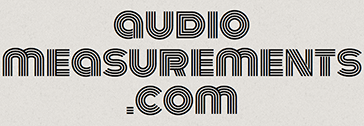In my view, the Dante audio networking protocol has taken the lead position when compared to other audio networking protocols (old and current).
wiki – Comparison of audio network protocols
wiki – Audio network protocols
One interesting side note is that via Audinate, Dante was developed with support from the Australian government.
Audinate – history
Where previously Smaart classes were taught using a standard audio interface and students had to watch the instructor have all the fun, some Smaart classes (such as the recent class I attended in Fort Worth) are using a Dante audio interface to share signals to the class. In the case of my class, a Yamaha Tio1608-D stage rack was used for inputs and outputs and signal distribution. Over 25 people in the class were able to access the relevant signals in real time via the Dante Virtual Soundcard driver at the same time and follow along.
Audinate – Dante Virtual Soundcard webpage
Looking forward, with a Dante mixing console, Dante stage racks, Dante DSP unit, measurement rig, etc… one will be able to measure any signal against any other signal at any time without a single patch cable or interruption in signal flow.
As any measurement rig becomes more complicated, there are some considerations to address. One is the latency inherent to the Dante enabled hardware and Dante protocol. Latency is a fact of life. Even using a simple audio interface, one has to keep track of how signals are being sourced to avoid making mistakes in the time domain. I mentioned this concern to a network specialist / audio engineer friend and he pointed me toward this information.wiki – Precision Time Protocol
At the end of the day when measuring, we reference microphones & electrical signals against each other and the goal is to see the difference (if any) between them. There is latency involved with all A/D and D/A conversions. There is a small amount of latency related to audio network traffic. What is relevant is to understand where in the signal chain you are referencing to. If you are time aligning your speakers and your reference signal (pink noise) is not following the same signal path as your microphones, that may not matter as long as you maintain the same signal paths. Once you begin to pick signals from different devices on a Dante system and some leave the system and reenter, you may have issues.

